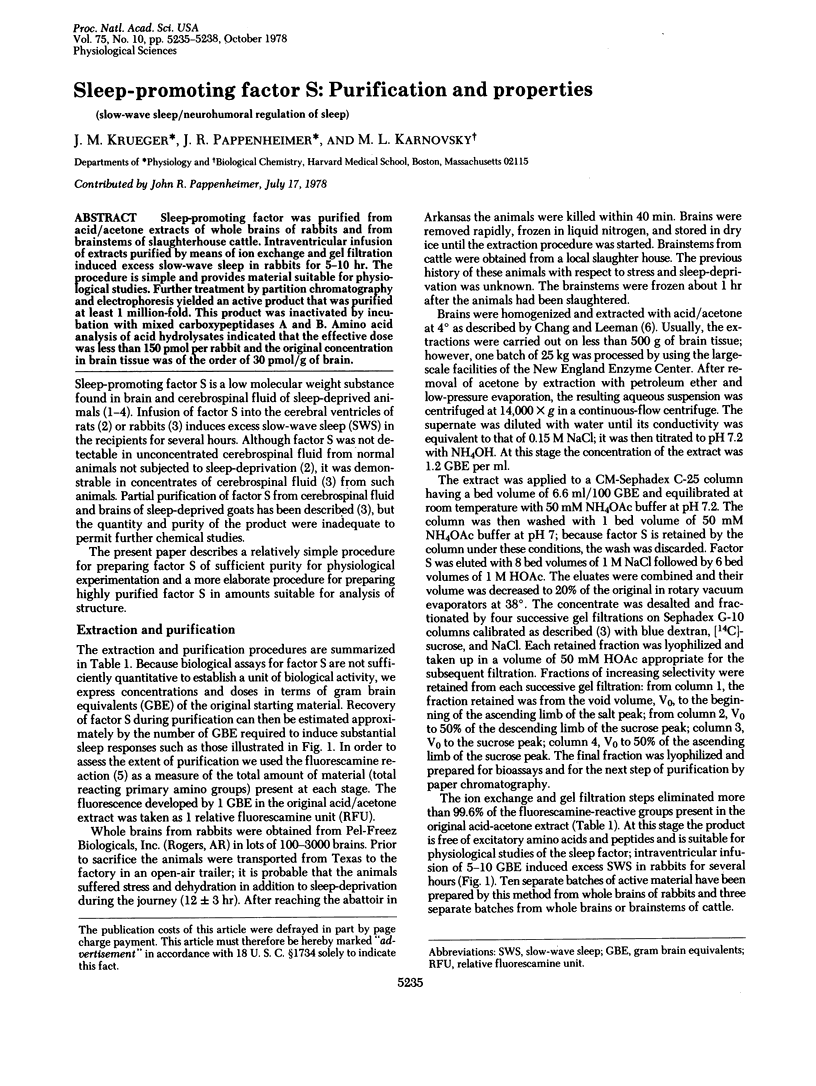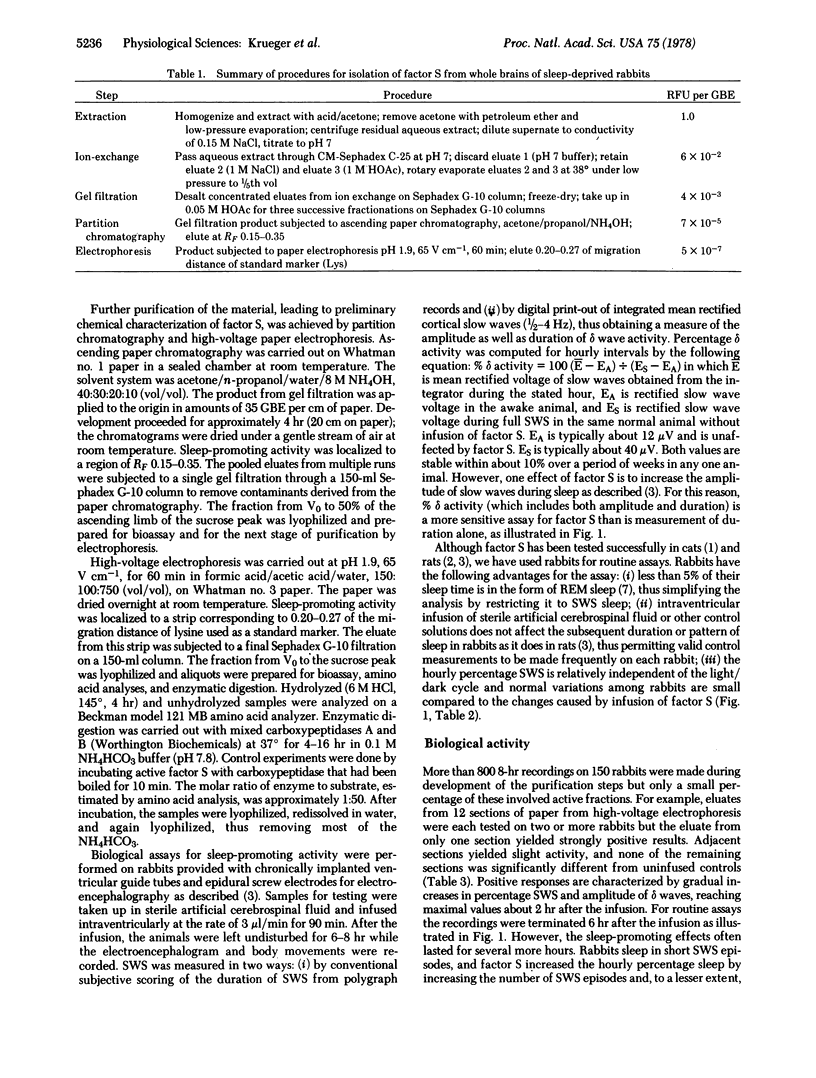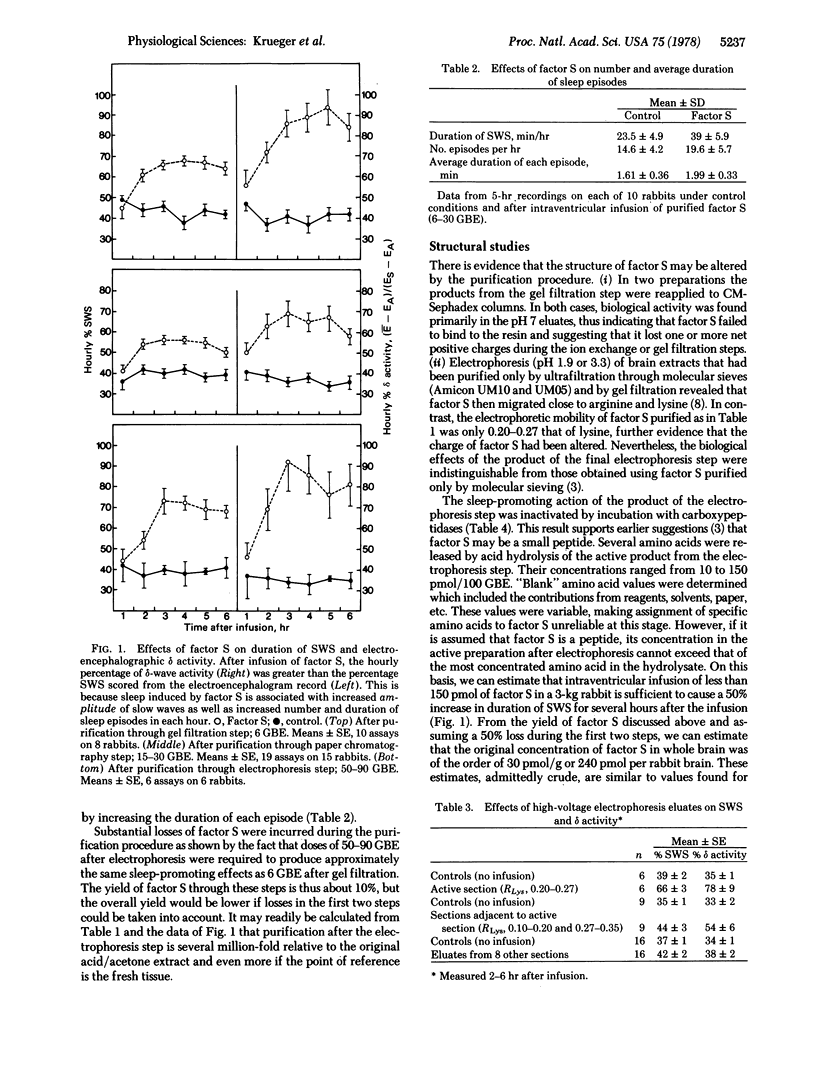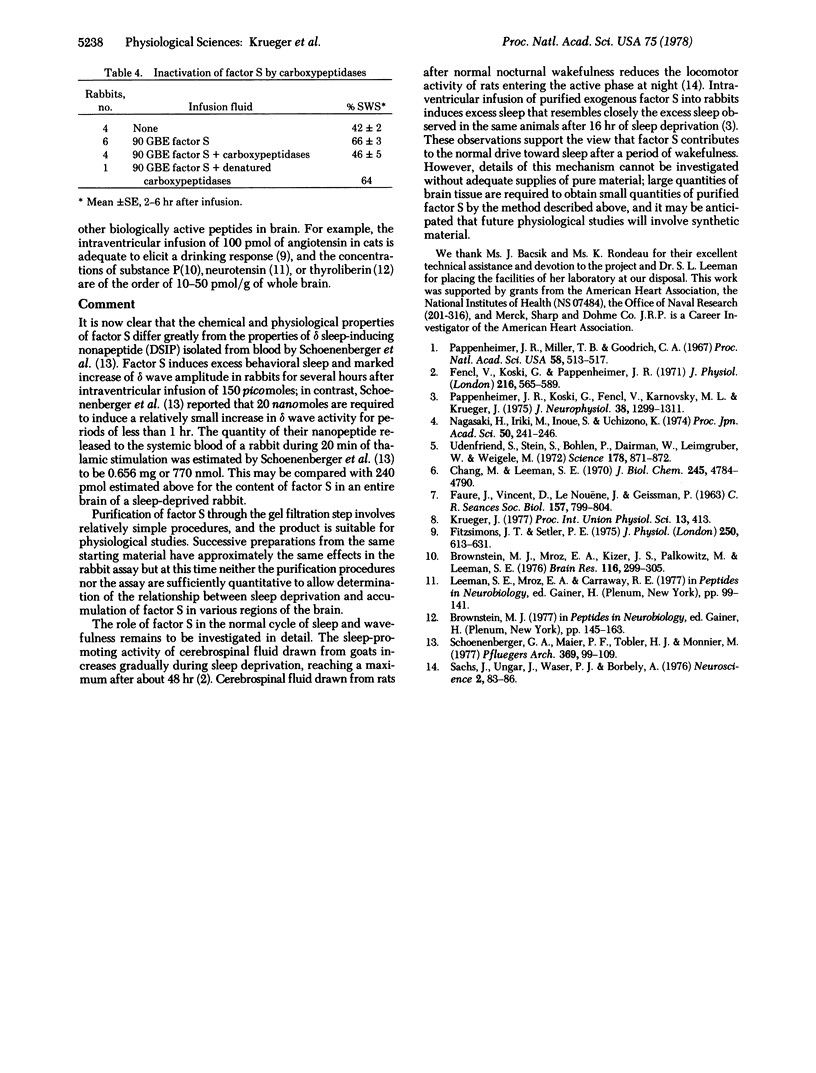Abstract
Sleep-promoting factor was purified from acid/acetone extracts of whole brains of rabbits and from brainstems of slaughterhouse cattle. Intraventricular infusion of extracts purified by means of ion exchange and gel filtration induced excess slow-wave sleep in rabbits for 5-10 hr. The procedure is simple and provides material suitable for physiological studies. Further treatment by partition chromatography and electrophoresis yielded an active product that was purified at least 1 million-fold. This product was inactivated by incubation with mixed carboxypeptidases A and B. Amino acid analysis of acid hydrolysates indicated that the effective dose was less than 150 pmol per rabbit and the original concentration in brain tissue was of the order of 30 pmol/g of brain.
Full text
PDF



Selected References
These references are in PubMed. This may not be the complete list of references from this article.
- Brownstein M. J., Mroz E. A., Kizer J. S., Palkovits M., Leeman S. E. Regional distribution of substance P in the brain of the rat. Brain Res. 1976 Nov 5;116(2):299–305. doi: 10.1016/0006-8993(76)90907-0. [DOI] [PubMed] [Google Scholar]
- Chang M. M., Leeman S. E. Isolation of a sialogogic peptide from bovine hypothalamic tissue and its characterization as substance P. J Biol Chem. 1970 Sep 25;245(18):4784–4790. [PubMed] [Google Scholar]
- Fencl V., Koski G., Pappenheimer J. R. Factors in cerebrospinal fluid from goats that affect sleep and activity in rats. J Physiol. 1971 Aug;216(3):565–589. doi: 10.1113/jphysiol.1971.sp009541. [DOI] [PMC free article] [PubMed] [Google Scholar]
- Fitzsimons J. T., Setler P. E. The relative importance of central nervous catecholaminergic and cholinergic mechanisms in drinking in response to antiotensin and other thirst stimuli. J Physiol. 1975 Sep;250(3):613–631. doi: 10.1113/jphysiol.1975.sp011073. [DOI] [PMC free article] [PubMed] [Google Scholar]
- Pappenheimer J. R., Koski G., Fencl V., Karnovsky M. L., Krueger J. Extraction of sleep-promoting factor S from cerebrospinal fluid and from brains of sleep-deprived animals. J Neurophysiol. 1975 Nov;38(6):1299–1311. doi: 10.1152/jn.1975.38.6.1299. [DOI] [PubMed] [Google Scholar]
- Pappenheimer J. R., Miller T. B., Goodrich C. A. Sleep-promoting effects of cerebrospinal fluid from sleep-deprived goats. Proc Natl Acad Sci U S A. 1967 Aug;58(2):513–517. doi: 10.1073/pnas.58.2.513. [DOI] [PMC free article] [PubMed] [Google Scholar]
- Schoenenberger G. A., Maier P. F., Tobler J. H., Monnier M. A naturally occurring delta-EEG enhancing nonapeptide in rabbits. X. Final isolation, characterization and activity test. Pflugers Arch. 1977 Jun 8;369(2):99–109. doi: 10.1007/BF00591565. [DOI] [PubMed] [Google Scholar]
- Udenfriend S., Stein S., Böhlen P., Dairman W., Leimgruber W., Weigele M. Fluorescamine: a reagent for assay of amino acids, peptides, proteins, and primary amines in the picomole range. Science. 1972 Nov 24;178(4063):871–872. doi: 10.1126/science.178.4063.871. [DOI] [PubMed] [Google Scholar]


